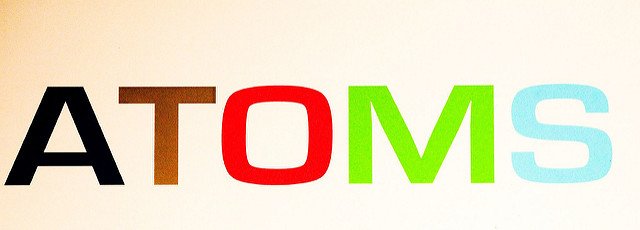What Are The Three Rules For Writing The Electron Configuration Of Elements
You are here: Home / Atomic Structure / Atomic Structure: 3 Rules of Writing Electronic Configurations of Atoms

Today, we will look into the 3 Rules of Writing Electronic Configurations of Atoms in the topic of Atomic Structure.
Let's look at some fundamentals of an atom first.
Electrons do not travel in fixed orbits around the nucleus i.e. they are not localised in fixed orbits. Instead, they travel in a region of space around the nucleus called an atomic orbital.
An atomic orbital is a region of space round the nucleus in which the probability of finding a particular electron in a free atom is the greatest. Some would say roughly about 98% chance of finding an electron.
Electrons can occupy four types of orbital, which differ from each other in terms of shape and in their orientation in space. They are called s, p, d and f orbitals. Students in Singapore taking the JC1 JC2 GCE A-Level H2 Chemistry Exam Syllabus Code 9729 are required to draw and describe the shapes of s, p and d orbitals accurately. I have blogged about this with a YouTube Video previously. If you have missed out on that, you can view them HERE and HERE. In my JC2 H2 Chemistry Tuition Class, i noticed that many students have difficulty in drawing the d orbitals. So, do take a look at the videos as soon as possible if you are not sure about them.
A shell is a group of orbitals that are about the same distance from the nucleus, numbered starting with the shell nearest to the nucleus and working outwards. Each successive shell contains sub-shells which have different number of orbitals in it. In the nth shell, there will be n sub-shells, n2 orbitals and a maximum of 2n2 electrons. I have also blogged about this with an YouTube Video previously. You can view them HERE if you have missed out on it.
Writing Electronic Configurations of Atoms:
In the video below, you will learn how to write the electronic configurations of atoms.
Length of video: 11.0 mins
Direct video link: https://youtu.be/ZD5LOZvli6o
Let's re-cap what you have learned in the above video.
The electronic configuration of an element describes how the electrons of its atoms are arranged in their shells, their sub-shells and atomic orbitals.
In an atom, the orbitals (a region of space around the nucleus in which the probability of finding a particular electron is the greatest) are filled in order of increasing energy (starting from 1s orbital) according to the following:
3 Rules of Writing Electronic Configurations of Atoms
1.Aufbau Principle
The added electron will always occupy the orbital with the lowest energy first.
2.Pauli Exclusion Principle
Each orbital can hold a maximum of two electrons of opposite spins.
3.Hund's Rule of Multiplicity
When filling a sub-shell, each orbital must be occupied singly (keeping electron spins the same) before they are occupied in pairs.
Note that electrons occupy the 4s orbital (lower energy) first before filling the 3d orbitals. Once the 3d orbitals are occupied by electron(s), these repel the 4s orbital to a slightly higher energy level and must be presented correctly when you write down your electronic configuration for atoms.
Two Key Exceptions:
1. Electronic configuration 4s1 3d5 is more stable than 4s2 3d4 because a half-filled 3d sub-shells are more stable e.g. Cr
2. Electronic configuration 4s1 3d10 is more stable than 4s2 3d9 because a completely filled 3d sub-shell is more stable e.g. Cu
I hope you find the content easy for your understanding and if you have any questions, leave me a comment below. Feel free to share this blog post with your friends.
Subscribe to my blog to receive 2 updates per month sent to your email!
Now, for those who are very new to this spdf concept, recommended JC A-Level H2 Chemistry tutors will tell you to go through every elements from Hydrogen (atomic number 1) to Krypton (atomic number 36). Likewise, I told all my students in my JC1 A Level Chemistry Tuition Classes to do so.
You can print out the worksheet i have customised and work on them immediately to improve your Chemistry.
Once done, you can come back and look at the suggested answers.
For those who wants to know more about filling electrons, you can refer to the A Level Chemistry website chemguide.co.uk by Jim Clark which discussed a lot more examples.
PS: Underrelated articles below, there are several blog post discussions and questions related to Atomic Structure. You can also do a keyword search using the search box at the top right hand corner.
PPS: If you feeling lost in your JC A-Level H2 Chemistry lectures and tutorials, do join us in our weekly JC1 or JC2 H2 Chemistry Small Group Tuition Classes.

Related Articles:
What Are The Three Rules For Writing The Electron Configuration Of Elements
Source: https://www.alevelh2chemistry.com/writing-electronic-configurations-atoms/
Posted by: jacquespueed1957.blogspot.com

0 Response to "What Are The Three Rules For Writing The Electron Configuration Of Elements"
Post a Comment